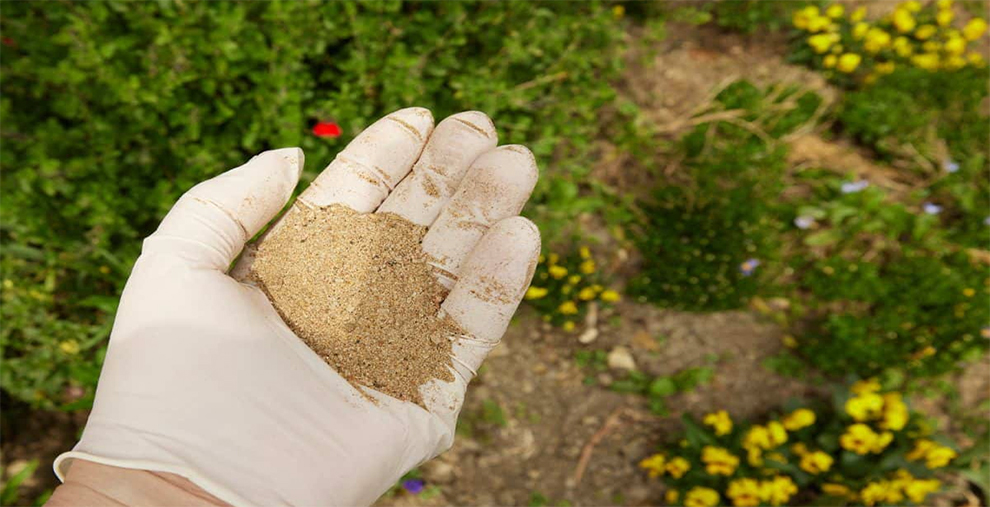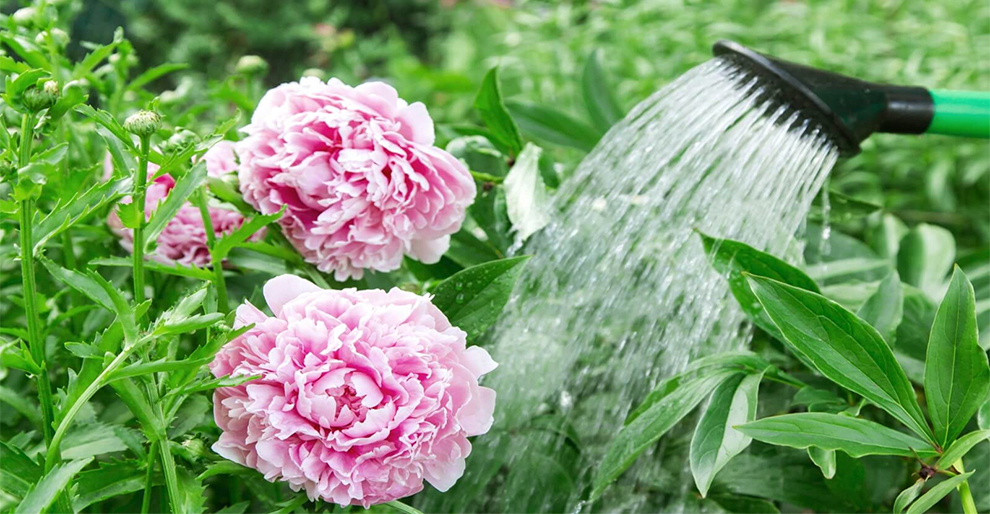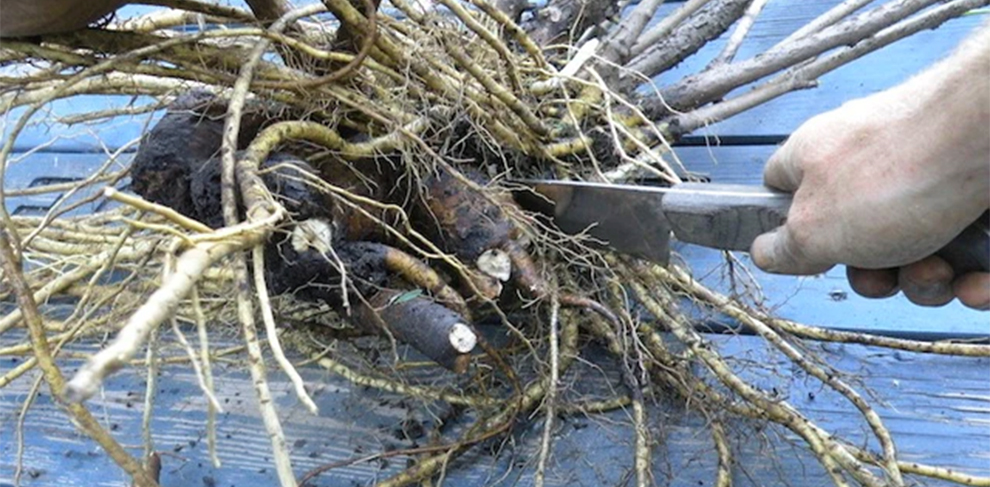How To Care For Peonies Plants And Bushes In The Fall?
For peonies fall care – stretching the duration between two watering sessions, using organic fertilizers, and pruning back the dead foliage are the three important things to begin with.

Silken-textured, large flowers and different colors of Peony bushes grace the yard during the spring.
Peony care in fall is quintessential for the spring blooms and winter preparedness, but the kind of care you offer to the plant depends on what specie you are growing.
In the fall, it is necessary to start with clearing off dead foliage and peony flowers. You will be required to adjust your watering and fertilizing schedule a bit. You may also transplant and divide peonies during this time.
Most prevalent amongst peony is the non-woody or herbaceous peony plant. They are hardy in USDA zones three through eight. Such varieties die back in the fall and replenish their growth via the underground tubers every spring.
On the contrary, the tree peony is perennial and thrives in USDA hardiness zones four through seven. They have a deciduous woody shrub, which remains in your yard around the year.
Knowing how to care for peonies in the fall is pivotal, especially if you have a new plantation. It is because once they are established, you will have eye-catching summer and spring flowers for many decades.
Old-fashioned yet gorgeous, peonies are fragrant, attractive species with showy, full blooms that can catch the eye of any passerby.
These perennials are long-lived and are usually a perfect hand-me-down from one generation to the next. Beyond their attractive blooms in hues of lilac, red, pink, peach, white, and yellow, many are sweetly perfumed and are the top choice for cut flower arrangements and bouquets.
Here, we will discuss everything you must know about peony fall care and maintenance.
How Do You Care For Peonies In The Fall?
The first thing you need to do in the fall is to prune the peonies and remove all the dying foliage and dead blooms.
Courtesy of the fleeting elegance of its blousy and big blooms, many people think of it as a delicate plant demanding guarding against the harsh winter weather.
But that’s far from the truth. Peonies can survive even the harshest winter as they are hardy to about -20 degrees and flower better in winters.
However, proper care during fall is quintessential for the upcoming winters. Keep reading to know what needs to be done in the fall for peonies.
A. How to cut back peonies in the fall?

Know that fall care for peonies plants is incomplete without pruning. Use a clean gardening shear to cut back the peonies in the fall. It is an unmissable step for new gardeners interested in peony fall care.
During winter, peonies enter dormancy. Hence, take the time and effort to examine the plant during fall and prune all the leaves that have died. With gardening, shears cut the stems drooping close to the ground and collect all the leaves and stems from the site.
In this while, you can add a layer of mulch. It helps shield the sleeping peonies. However, do not forget to remove this mulch layer in spring when they are ready to pop out.
Please know that only herbaceous peonies get trimmed for the winter, whereas the tree peonies’ woody stems will stay above the ground during winter. They bloom on the wood in the spring. Here is more for you on how long do peonies take to bloom.
B. Is planting peonies in the fall a good idea?

Yes, fall is the best time for planting the peonies as they are spring and not summer flowers.
Ideally, you can grow them in late September and October across America and even late in the fall in USDA zones 7 through eight.
Also, if you intend to move a mature plant, even fall can be a good time, particularly after the plant has gone dormant. Give peonies at least six weeks to settle in a place before the ground freezes.
Even though some argue that you can plant the peonies in the spring, spring-grown peonies do not do very well and lag about a year behind those planted in the fall.
For good peony care in fall, be cautious as you plant them. So, dig a hole approximately two feet deep and wide when planting. Alter the existing soil with compost. It can help better drainage.
Add microorganisms and nutrients into the soil. As a general rule of thumb, add one part compost to one part garden soil, and blend them.
Also, pick the healthy peony varieties. Typically, the peonies are grown in their bare root form. Each bare root must have around three eyes. These are tiny red buds that will later develop into stems.
Every bare root tuber must be planted only two to three inches deep and positioned with eyes pointed upwards. However, do not plant deeply and water well once after planting.
C. Should You Add Fertilizer To Peonies In The Fall?

Yes, if it is an organic fertilizer.
Understanding the fertilizing requirements is also a crucial aspect of fall care for peony bushes. You can use an organic fertilizer such as aged manure or compost during the fall. Add a two-inch thick layer of either material on the garden soil, ensuring that you thoroughly cover the established peony bushes.
However, if you employ inorganic fertilizer, it is best to wait until spring. Fertilizing with a synthetic fertilizer during fall or summer promotes growth, which disrupts the plant balance.
D. Does the watering frequency change for peonies during fall?

You can elongate the time between two watering, but do not stop irrigation completely during fall.
How you water and how frequently you water also play a crucial role in peonies’ fall maintenance. Studies by Clemson University Extension state that peonies become drought-tolerant, but they still need water to look healthy and bloom well.
Hence, you must water them every 10 to 14 days while they are young. While watering, ensure that you water deeply, not hard.
It forms a robust root system. Once the peony flowers, remove the seed heads. It helps the plant conserve energy and use it towards flower production in the spring.
Transplanting Peonies In The Fall

Fall is the best time to transplant the tree peonies or herbaceous. However, do not compromise on peony care in fall when moving the plant. Be cautious and ensure that you do not damage the fleshy tubers.
So, cautiously dig around and then beneath the roots. Now lever the peony off the ground, ensuring that you do not disturb the root mass. Now, your plant is ready for transplanting to a new location.
Ensure that this new spot has well-draining, rich soil and receives full sun to partial shade. Lastly, maintain the plant at its original soil level and water it well.
Splitting and Dividing Peonies In Fall

You can divide the large and established peonies in the fall. It helps renew growth and goes a long way in making new plants. However, clumps can grow in place for four to five decades sans any division.
Cut back the foliage for division and neatly dig the peony. Next, wash or shake off any dirt snugging the root system. Use a clean, sharp knife (sanitized with rubbing alcohol) and trim the foliage.
Trim the clump into divisions, each holding several roots and three to five eyes. Eyes are the buds on the crown, which later develop into stems. Once split, you can replant the trimmed piece in the new location. Ensure the bud is at least one or two inches underneath the soil surface. Once done, water well.
How To Prepare Peonies For Winter In The Fall?
Provide your herbaceous perennials with a thick mulching layer, at least two to three inches, comprising organic material like straw or shredded bark for good winter protection.
Taking care of peonies in the fall is not tricky, provided you know what to do and when to do it. Being an important aspect of fall care, preparing the plant for the cold winter weather is crucial.
If you reside in colder areas outside the plant’s tolerable hardiness zones, you must take active measures to shield the plant against the winter cold. So, even though mulching is pivotal, you must wait until the ground freezes to apply the mulch.
However, if you grow woody peonies in colder regions, say USDA zones four and five, cover the bush with burlap in the fall to shield it against cold temperatures and harsh winter winds.
Itoh Peony Fall Care
The planting and care guide for Itoh peonies is almost the same as the herbaceous peonies. However, instead of the fall, these are best planted in spring.
So you can plant them as soon as the ground is ready to be worked on. Once established, they are almost trouble-free but demand regular feeding (peony fertilizers).
But because Itoh peonies have inherited the woody peonies’ robust stems, they do not need staking as they do not bend over in rain and wind. They are also resistant to blight, a problem in herbaceous peonies.
So, how to take care of peonies in the fall? Read below to know:
- Itoh peonies develop dense foliage if planted in areas that receive full sun, but the flowers can benefit from part shade in warmer climates, especially during afternoons.
- In the first year, you must consistently water the plant. It helps establish the roots. Ensure the soil is moist across the growing season, but do not overwater, as it may result in root rot.
- Grow your Itoh peonies in well-draining, rich soil with a pH ranging from mildly acidic to mildly alkaline.
- To ensure good air circulation, leave at least a two to three feet gap between two peonies.
- Itoh is sensitive to high nitrogen levels. Hence, pick a fertilizer with low nitrogen levels, and fertilize thrice a year – first in the early spring to boost new growth, followed by when flower beds show, and finally in the fall to ensure solid root development before winter.
- Please remember the fertilizer composition for spring and summer will be different than for fall. Use a 10-10-10 balanced fertilizer during the summer and spring months and a 5-10-10 formulation in the fall.
- During fall, cut about four to six inches of the plant from the soil level or till where the stems die back.
- Get the plant ready for winter during the fall for healthy season growth. So, ensure that your plant is well-watered in the weeks leading to the frost. Eliminate and dispose of dead leaves before the winter sets in to prevent fungal spores. Mulching can also help boost plants’ health.
Tree Peony Fall Care
Again, peonies fall maintenance for woody peonies is almost the same as the other varieties, and like the herbaceous plants, even tree peonies do not appreciate transplantation.
So, while planting, look for a suitable home, and consider it their permanent abode. These are slow-growing plants and usually take at least three years before they start flowering. After they establish, they demand minimal care. Peonies have a long lifespan.
Here’s what you need to do for tree peony care in fall:
- Grow these peonies in full sun to dappled shade. Flowers might burn under the hot summer sun. Hence, some shade helps.
- Plant them in a free-draining soil having a slightly alkaline or neutral pH. Woody peonies do best in loamy soil fortified with compost.
- Their water requirements are medium. So, do not overwater the plant. However, watering deeply once the top four inches dry out helps.
- These plants grow well in regions that receive cold temperatures in the winter. For good fall care, adding a thick mulching layer can help. It offers excellent winter protection if you reside in areas where Tree peonies are borderline hardy.
- Add a decent layer of manure or compost into the soil during fall to give the plant a nutritional boost during the growing seasons.
- You must not prune in fall as the above-ground peony growth can help keep the root system guarded during winters.
